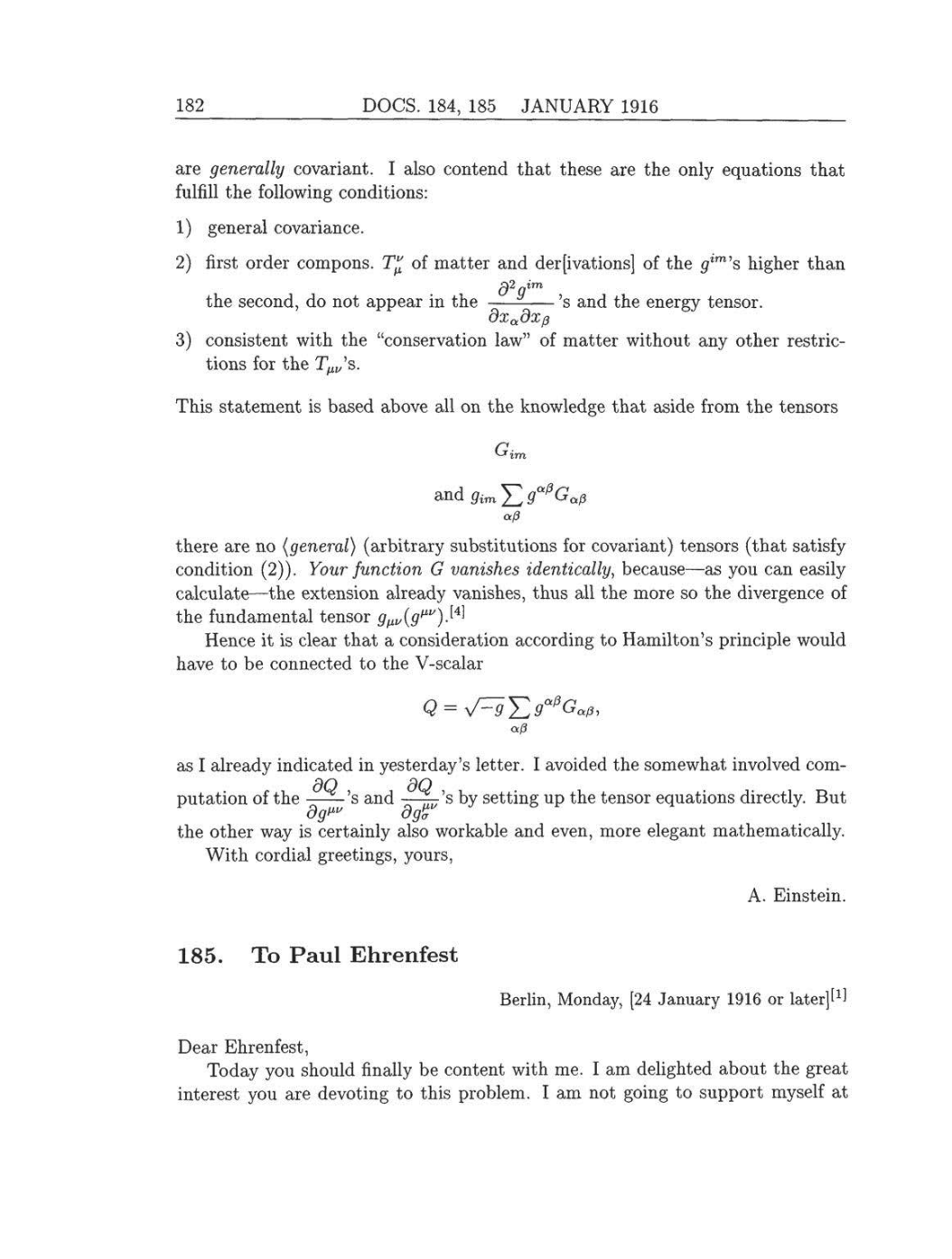182
DOCS.
184,
185
JANUARY
1916
are generally
covariant.
I
also contend
that
these
are
the
only equations
that
fulfill
the
following
conditions:
1)
general
covariance.
2)
first order
compons.
Tuv
of matter and
der[ivations]
of
the
gim,s
higher
than
the
second,
do not
appear
in
the
d2gim/dxdxB’s
and
the
energy
tensor.
3)
consistent
with
the
“conservation law”
of
matter
without
any
other
restric-
tions
for
the
Tuv’s.
This
statement is based above all
on
the
knowledge
that
aside from
the
tensors
Gim
and
gim
Z
gaßGaß
aß
there
are no
general
(arbitrary
substitutions
for
covariant)
tensors
(that satisfy
condition
(2)).
Your function G
vanishes
identically,
because-as
you
can
easily
calculate-the
extension
already vanishes,
thus
all
the
more
so
the
divergence
of
the fundamental
tensor
guv(guv).[4]
Hence
it
is
clear
that
a
consideration
according
to
Hamilton’s
principle
would
have
to
be connected
to
the
V-scalar
Q
=
V-9'£9aßGaß,
aß
as
I already
indicated in
yesterday’s
letter.
I
avoided
the
somewhat involved
com-
putation
of the
dq/dguv’s
and
dQ/dgouv’s
by
setting
up
the
tensor
equations directly.
But
the other
way
is
certainly
also workable and
even, more
elegant mathematically.
With
cordial
greetings,
yours,
A.
Einstein.
185. To Paul Ehrenfest
Berlin, Monday,
[24
January 1916
or
later][1]
Dear
Ehrenfest,
Today you
should
finally
be content with
me.
I
am
delighted
about the
great
interest
you are
devoting
to
this
problem.
I
am
not
going
to support
myself
at
